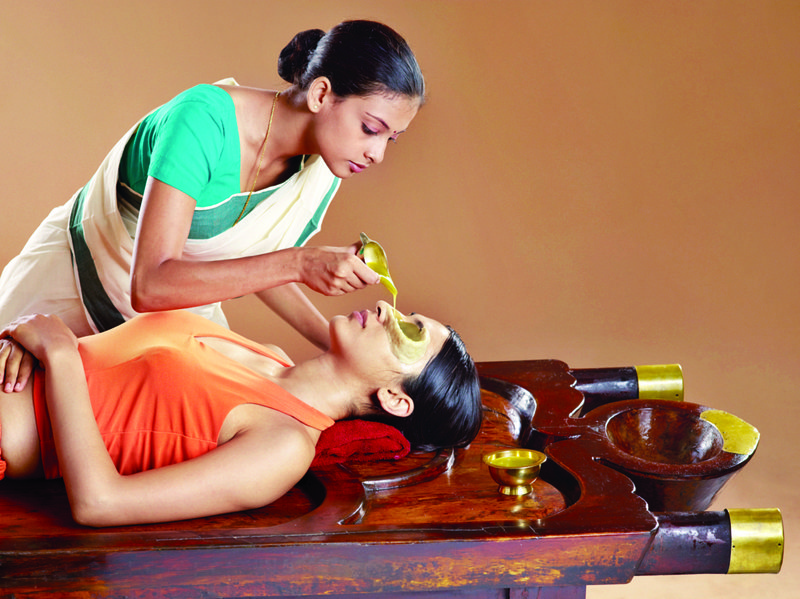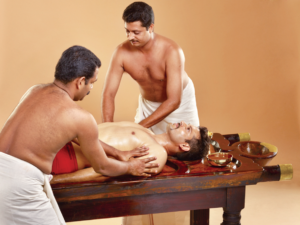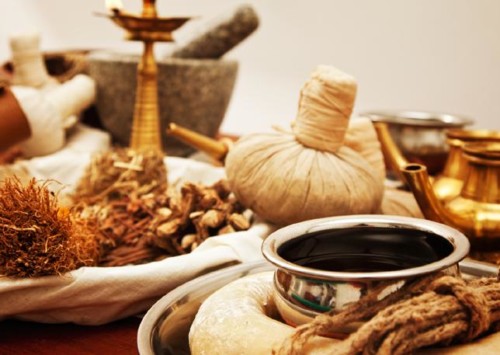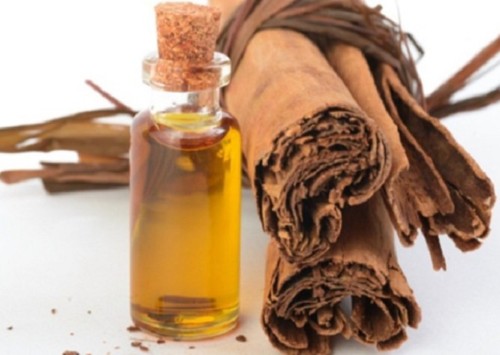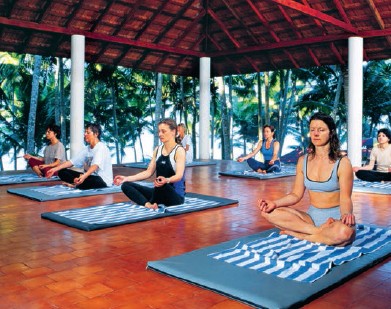Ayurveda, a promise of wellness
The ancient Indian system of medicine and treatment has been promising wellness and balance since thousands of years. Here are some tips to understand Ayurveda in greater detail.
In Sanskrit, Ayurveda means “science of life” and is a complete therapeutic system. Developed over 5,000 years ago in India with the aim to maintain physical, mental and emotional balance, this practice is becoming increasingly relevant to our contemporary needs. It transports us from our stressful and hectic lifestyles, from the pollution in our environment, and brings our attention back to our bodies and the little neglected pain. So, why not let Ayurveda cure all our ailments, at least for a while?
Recognised as traditional medicine in 1982 by WHO (World Health Organisation), Ayurveda is practiced today all over the world, and especially in the state of Kerala. The people of this southern Indian state often resort to massages and cures, and to traditional plant-based remedies offered by Ayurveda. Ayurveda’s holistic approach is taught in Universities and practiced in numerous hospitals, and has the same status as clinical medicines.
Dr Divya P., graduate from an Ayurveda college in Kannur, Kerala, unveils some secrets of this ancient practice.
Principles of Ayurveda: balance and harmony
“A person is considered healthy when his physiology is balanced, his digestion and metabolism are functioning well, his tissues and excretion functions are normal, and his mind and senses are in a constant state of profound happiness,”, Sushruta, author of one of the founding texts of Ayurveda, had proclaimed in 1,000 BC. This practice considers an individual as a unit formed by his mind, body and soul.
Each living being is attached to the universe through five fundamental elements: earth, water, fire, air and ether. The proportions in which each of these elements are present in the human body and the degree of the benefits that these elements offer vary from individual to individual depending upon their compositions and other important factors.
These components manifest within each individual in the form of three vital forces called doshas that represent three types of constitutions: vata, pitta and kapha.
Each individual is born with a certain proportion of the three doshas that work together on the mind and body. These doshas are not static and vary throughout the life of an individual changing according to their age, environment, physical activities or external factors such as climate, food or pollution.
Thus, health is dependent on the balance between the doshas. To protect them or to find them, the Ayurveda possesses a whole arsenal of treatments: preparations from medicinal plants, massage with oil, stimulating cares and detoxifiers. It also advocates practicing yoga and meditation regularly and recommends an adapted diet, preferably vegetarian.
Balance and detoxification: curing the Ayurvedic way
It is recommended to detoxify the body once-a-year as the toxins are considered to be the source of imbalance, diseases and fatigue. Certain treatments can help in losing weight or improving the skin quality in addition to the cleansing of the body.
Caution! The treatment must only begin after an extensive consultation with a doctor- reading weight and pulse, inspecting the tongue, skin, morphology, discussing lifestyles, eating habits, digestion, sleeping habits-the specialist needs to build the profile of the patient to start a tailor made treatment.
The cure includes massages, taking natural medicines and following a complete dietary routine, complemented with light physical activities.
Western tourists often find themselves intimidated by the ‘virechana’ treatment, whereby one has to drink large quantities of oil to cleanse the body, and this sometimes induces vomiting and diarrhoea. Do not fret! The local doctors adapt the treatment to the patient’s capacities, except in cases of serious illnesses.
The massages are done in dimly-lit, airy rooms. Coconut oil or sesame oil, mixed with turmeric and infused with plants that are chosen depending upon the individual’s constitution, is heated prior to the massage. This relaxes the body better and allows the rich qualities of the oil to seep and diffuse inside the body. The complete process includes the famous shirodhara, gently pouring oil on the forehead; abhyanga, circular massage on the entire body with warm oil; dhanyamladhara, warm water infused with specific herbs poured over the body at regular intervals; and for those who dare, chavuttithirumal massage, done with the feet.
Other patients are suggested tharpanan, cleansing of eyes with herbs and medicinal oils; or nasyam, purification of the nose by pouring inside medicinal oil; or dhoopanam, herb vapour to unblock the ears. In short, it’s a bag full of techniques dedicated to relaxing and restoring the balance in the body.
It is normal to feel a bit weak or nauseous for the first few days after the treatment: the toxins are leaving the body and the blood circulation is stimulated, but the body soon adapts to it. The doshas that are now rebalanced will protect the body and vamp up the immune system.
Some professional advice
Most of the cures offered to tourists in India or in Europe are adapted to the limitations of the modern-day lifestyles and so, are not needed to be followed strictly as demanded by the principles of Ayurveda. Here, Dr Divya P. gives us some tips to select our own cures and get maximum benefit from them.
- Consider following a cure during a transitory period, like the changing seasons, for example. The body is often weakened during these periods and it is the best time to take care of it.
- Make sure that your care centre assures a preliminary consultation with a qualified Ayurveda doctor. The general packages often proposed must be in accordance with the patient’s constitution.
- Plan a minimum of ten days of cure, the ideal being at least three weeks.
- Learn about the origins of the oils and the herbs used. They should preferably be produced biologically to avoid letting harmful pesticides enter the body.
- During the treatment, or even throughout the year, one must watch their diet and limit the consumption of animal proteins and increase that of spices, especially turmeric and peppers. Similarly, avoid stimulants like coffee, strong teas, or alcohol and prefer warm and infused herbal drinks.
- Separate meals by at least three hours and try to have dinner two hours before sleeping.
- Practice regularly any physical activity, preferably yoga, where the breathing is also worked upon.
- Learn to react positively and do not be overpowered by worries that disturb your body in the longer run.
Read more in our latest India & You issue https://mediaindia.eu/magazine/india-you/

